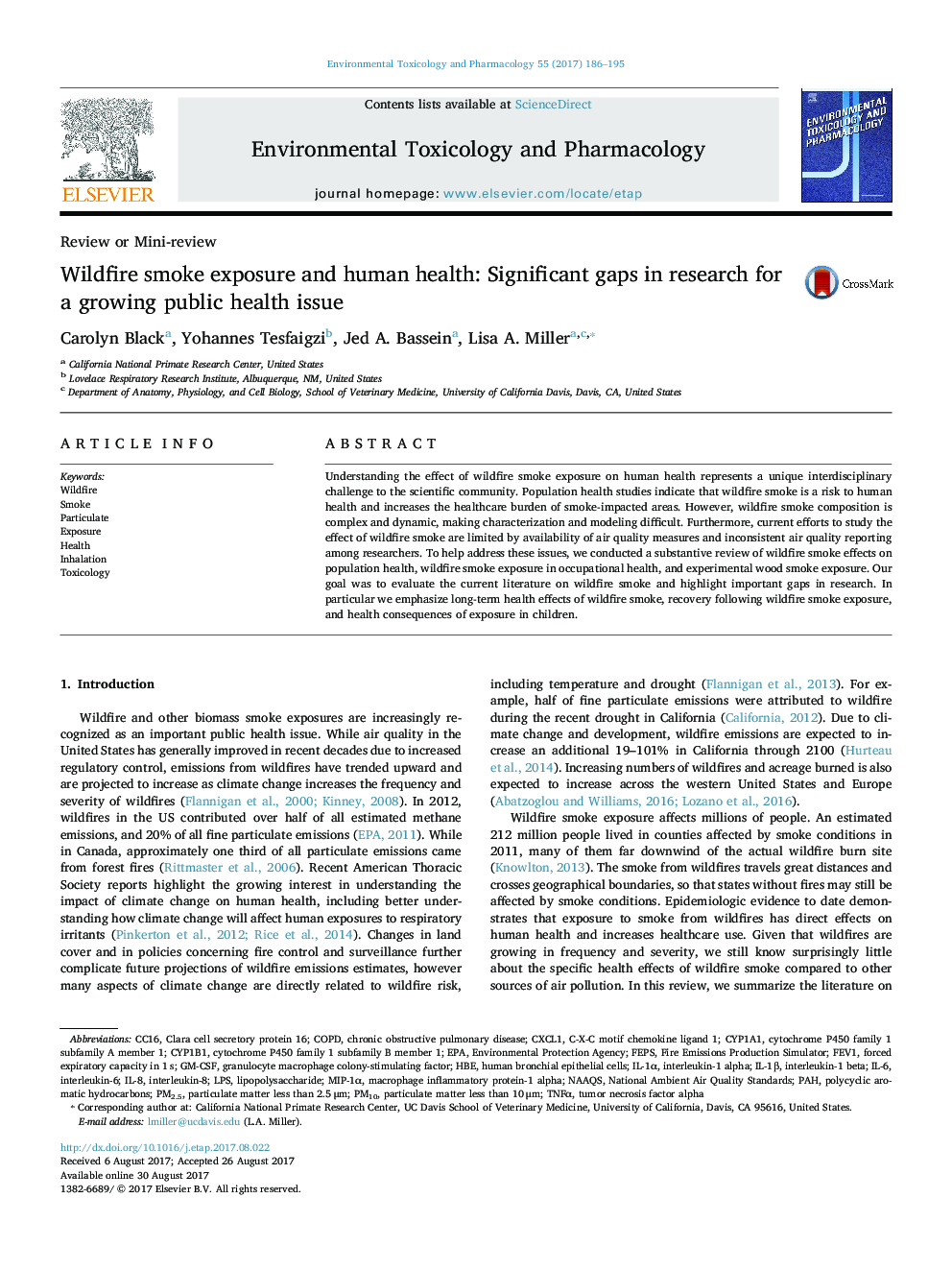| Article ID | Journal | Published Year | Pages | File Type |
|---|---|---|---|---|
| 5559767 | Environmental Toxicology and Pharmacology | 2017 | 10 Pages |
Abstract
Understanding the effect of wildfire smoke exposure on human health represents a unique interdisciplinary challenge to the scientific community. Population health studies indicate that wildfire smoke is a risk to human health and increases the healthcare burden of smoke-impacted areas. However, wildfire smoke composition is complex and dynamic, making characterization and modeling difficult. Furthermore, current efforts to study the effect of wildfire smoke are limited by availability of air quality measures and inconsistent air quality reporting among researchers. To help address these issues, we conducted a substantive review of wildfire smoke effects on population health, wildfire smoke exposure in occupational health, and experimental wood smoke exposure. Our goal was to evaluate the current literature on wildfire smoke and highlight important gaps in research. In particular we emphasize long-term health effects of wildfire smoke, recovery following wildfire smoke exposure, and health consequences of exposure in children.
Keywords
FEV1NAAQSCYP1A1EPAIL-1βGM-CSFIL-1αCXCL1PM10IL-8HBEPAHPM2.5CYP1B1MIP-1αCC16IL-6LPSFEPsTNFαWildfireEnvironmental Protection AgencyNational Ambient Air Quality StandardsInhalationInterleukin-8interleukin-6interleukin-1 alphaInterleukin-1 betaCOPDChronic obstructive pulmonary diseasetumor necrosis factor alphaParticulateExposureSmokeHealthHuman bronchial epithelial cellsToxicologylipopolysaccharidemacrophage inflammatory protein-1 alphagranulocyte macrophage colony-stimulating factorPolycyclic aromatic hydrocarbons
Related Topics
Life Sciences
Environmental Science
Health, Toxicology and Mutagenesis
Authors
Carolyn Black, Yohannes Tesfaigzi, Jed A. Bassein, Lisa A. Miller,
